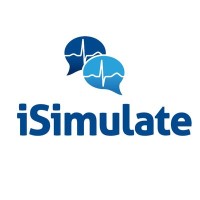Supporting the Further Education of Rural and Remote Physicians
Supporting the Further Education of Rural and Remote Physicians
Providing means through which physicians and other medical practitioners can continue to develop existing skills while learning new ones is a critical part of any medical education system. Especially in a field of learning as dynamic and changeable as medicine, ensuring that practitioners have easy access to the latest information, presented in a professional way alongside clear and easily measurable metrics is crucial.
New techniques and methods are constantly being developed, and ensuring that their patients are getting the best standard of healthcare means medical practitioners must constantly be re-examining and developing their abilities.
H2 The tyranny of distance
Historically, further education for medical practitioners was delivered through a variety of organisations and schools on a purely optional basis[1], as well as on an ad hoc basis through grand rounds and case discussions[2]. The problem is that these methods of education require in-person attendance at a central location; extremely difficult for physicians working in remote or smaller rural settlements in Australia’s vast Outback.
Providing this form of education means significant effort and cost to either the education provider or the student physician. Either students have to take time away from their practice and their patients – who may not have another convenient doctor – or education providers have to invest in establishing more education facilities in remote areas – which will still require students to travel. Additionally, these facilities may have to provide not just for the student’s educational needs but their basic necessities too as students may live on-campus[3].
The various costs involved make both options unappealing for education providers and students. However, the need for further education for rural doctors persists. If anything, the need for broader and more up-to-date medical education is more crucial in remote areas where there are fewer medical professionals per capita. Rural professionals have to consult and diagnose broadly, as there is simply not the choice and degree of specialisation available for patients, as the nearest major hospital may be hours away by car.
H2 New solutions for an old problem
Since the First Fleet, Anglo-Saxon Australian society has struggled to adapt aspects of European society to the continent’s vast and often hostile environment. Both the medical profession and the education system faced – and continue to face – issues relating to supporting practitioners and students at enormous distance.
The beginnings of a comprehensive delivery system for distance medical education could potentially be found in a combination of e-learning and accurate medical education supplies. E-learning provides a low-cost and easily deployable method of teaching complex procedures and concepts that doesn’t interfere with a physician’s day-to-day responsibilities. Their ability to enhance channels of student feedback and support self-directed learning[4] is ideal for practicing physicians who would benefit from a more student-driven form of education.
For medical education supplies to complement further medical education, speak to the team at Mentone Educational today.
[1] Geffen L. A brief history of medical education and training in Australia. Med J Aust. 2014;201(1):19-22. doi:10.5694/mja14.00118.
[2] Tarala, Richard, and Alistair W. Vickery. "Hospital grand rounds in Australia." Med J Aust 183.11/12 (2005): 592-594.
[3] Peachey, L. G., & McBain-Rigg, K. (2011). The challenges of remote area medical education. Med J Aust, 194(10), 495-496.
[4] Watson M., Jolly B. The future of Australian medical education: a focus on technology. Med J Aust. 2012;1(3):26-28. doi:10.5694/mjao12.10679.




















